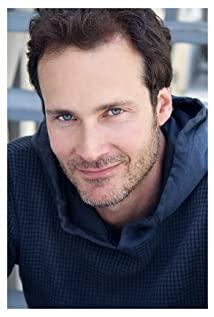"X-Men: Dark Phoenix" was released. As the final chapter of the X-Men series that has been deployed for more than 20 years, it seems that it was not so smooth before the release. The schedule was delayed again and again, and the owner 20th Century Fox was acquired by Disney. , The X-Men copyright originally sold by Marvel went round and round and gathered with Marvel under the command of Disney, which made many Marvel fans extremely excited, looking forward to the blossoming of the X-Men in the real-Marvel era.
Although the reputation of this Dark Phoenix is mediocre, the X-Men series has always been a peculiar existence in comic-adapted movies. In terms of special effects, production, and investment, it is not comparable to the Avengers series, and in terms of content depth, it is not comparable to DC's Batman (mainly Nolan series), the level is actually between the cheap Green Lantern and Deadpool. But why does this series attract so many fans, whether it is the love and murder of Professor X and Magneto, or the fate of Uncle Wolf's Lone Star and the death of a guest, all fans are moved.
In addition to the movie style, the unique reason for the X-Men series is its social meaning, and the metaphor in its core is more likely to hit some people, which is moving. Many times, apart from documentaries, film is an art of metaphor. For the successful use of metaphors, there are often unexpected gains outside the film.
Iron Man is Prometheus in the age of science and technology. While bringing advanced technology to the world, he also suffers from the torture of modernity; Batman's Gotham City is New York, and it is the endorsement of the modern capitalist city of the West; Wong Kar-wai's Evil in the West is not about Jin Yong, nor is it about Ip Man by a generation of masters; Kubrick's The Shining is more than just a story about a haunted house.
Those famous works in the history of shadows, those well-known works of art and literature, all hide unexpected metaphors in both real and illusory situations, allowing the audience or readers to peel off the meringue on the surface of the works. Breathtaking stuffing for a spiritually great beauty.
What is a metaphor?
What is this metaphor that gives the movie its magic? Aristotle described metaphor in Poetics this way—“name this thing in the name of another.” That is, a thing, like another, is not his own. Like poetry and philosophy, metaphor is an ancient intellectual activity.
In the book "Metaphors We Live By," co-authored by two American linguists, George Lakoff and Mark Johnson, they clearly put forward that "whether in language or in thought and action" , metaphors are ubiquitous in everyday life, and the conceptual systems on which we think and act are themselves based on metaphors.”
To give a simple example - the argument is war:
Your point is indefensible ; he attacked weaknesses in my point ; I smashed his argument; he never won ; you disagree? Then fight back ; if you employ that tactic , he will destroy you.
We all know that an argument is not a war, but we tend to evaluate an argument we've been in as a "war". We use some concepts from the war to construct the behavior in dispute to help us better understand the situation in the dispute. In fact, the essence of metaphor is to understand and experience current things through another fifteen.
The advantage of this is that we can use a well-known thing to describe something that is abstract and difficult to grasp. For example, we often say - "time is money." As long as a normal mind, it will be very clear that time and money are two different things. This metaphor has a very representative meaning. On the surface, we have similar behaviors towards money and time, such as we may waste time or money. In terms of connotation, this metaphor directly points to the core of the two, that is, their "precious" attribute.
As for the metaphor itself, to expand a little more, there are many types of metaphors, such as:
Structural metaphors, like the aforementioned time is money, use one concept to metaphor another;
Orientation metaphors, such as up-down, inside-outside, outside-inside, etc., we often say that happiness comes first, Wong Kar-wai said face and inner child, as the saying goes, distant relatives are not as good as close neighbors, etc.;
Ontological metaphor, substituting one kind of physical experience for another, for example, the brain is a sophisticated machine;
What is the metaphor for the X-Men?
X-Men (X-MEN) was created in the 1960s by the master writers JACK KIRBY and STAN LEE of the American comics industry. All members of the X-Men are so-called "mutants" (MUTANTS), and they have a mutated "X gene" in their genetic genes, causing them to be born with unusual characteristics.
In Marvel's superhero series, there are many heroes with superpowers due to mutation, such as Spider-Man being bitten by a spider, Hulk and Fantastic Four being radiated and so on. But the special thing about the X-Men is that, first of all, their mutation is not an accident of the outside world, but more of an active mutation in genes; secondly, they form a group, not like other mutant heroes, just one case.
You must know that once you rise from an individual to a group, the problem you will encounter is not just love, hate, and hatred, not only the maxim that Spider-Man believes in, the greater the ability, the greater the responsibility, but it has become a social problem that has entered sociology. level. In the Marvel family, a group that is slightly similar to the X-Men is the "Inhumans". They are also a family of people with superpowers, but they are not mutants, but the product of Kree experiments.
So what's the metaphor behind the X-Men group?
Let’s first look at its creative background. In the 1960s, after just recovering from the pain of World War II, it fell into the situation of the escalation of the Cold War, especially when the United States stepped into the quagmire of Vietnam, and the world was in a constant confrontation. in the concept of trembling development.
Secondly, Mr. Stan Lee is a Jewish immigrant from New York, and his Jewish identity is believed to have brought some different experiences to his growth, especially in the first half of the 20th century, under the worldwide anti-Semitic sentiment.
Then there are the scars that have never been healed in the United States - racial discrimination. These are all presented in the X-Men. It can be said that if the superpowers of the mutants in the X-Men are deprived, it will become a realism. s work. Between ourselves and others, discrimination and anti-discrimination, a torture of human nature is issued.
Learn some sociological context for the X-Men metaphor
William Thomas, the famous representative of the sociology of the Chicago School, once said, "In our daily life, in fact, we can't be completely accurate in determining our own lives and goals. We live by inference. For example, I am you. You can't know, or judge, whether I will steal your money or if so." That is, in this case, in the process of getting along with people, we need to make a lot of inferences.
Another well-known American sociologist, Irving Goffman, discussed some psychological and behavioral conditions of people when they enter the society and interact with others in "Self-presentation in Daily Life". He points out that "regardless of the particular purpose an individual has in mind, his interest is always in controlling the behavior of others, especially the way they respond to themselves. This control is achieved primarily by influencing the definition of the situation that others are developing."
So in daily contact, communication between individuals becomes a game of information—an infinite cycle of possible concealment, discovery, false display, and rediscovery. Robert E. Parker, also a Chicago School sociologist, once described:
"The original meaning of the word man, a mask, may not be an accident of history, but an acknowledgement of the fact that, everywhere, everyone is always more or less aware that he is playing a role in It is in these roles that we know each other, and it is in these roles that we know ourselves.”
People can often control other people's perceptions and impressions of themselves through their own verbal expressions, but in addition to this, Goffman proposed another expression called "exposure", that is, each person's physical appearance and Information that some details reveal to others. This kind of information is often difficult to disguise or control. On the basis of this discovery, Goffman proposed a very important sociological concept - stigma.
Stigma - at the heart of the X-Men metaphor
In Goffman's book "Stigma - Notes on the Management of Damaged Identity", he gave the term "stigma" (stigma), invented by the Greeks at the time to refer to those who stigmatized people of unusual and disgraceful moral status. A new interpretation of contemporary society by nouns of signs. Compared to the past, stigma applies more to the shame itself than to physical evidence that symbolizes it.
So what does this "stigma" have to do with the X-Men? In Goffman's theory, it is emphasized that society determines the way people are classified, and in different social settings, determines that we will meet different people. For example, in this hospital set, we expect to meet a doctor in a white coat, which would be very strange if he was a lawyer.
People tend to predict the types and characteristics of others based on first impressions, and translate these predictions into normative expectations and legitimate demands. For example, our common requirement for an adult male is to start a family and start a business, although we do not realize that we have made such a requirement, only when this requirement cannot be achieved, such as the man does not have a family, or has a different sexual orientation or does not have a job. When wandering , we will have a gap in our hearts, that is, the gap between this person's virtual social identity (known by others) and his real social identity (his own).
When a person looks diabolical, dangerous, or utterly weak, the trait he embodies that makes him humiliated, that's stigma, and that trait is what we call a weakness, a weakness, or a flaw.
Goffman divides stigma into three categories:
1. Physical disability; 2. Personality defect; 3. Stigma of racial, ethnic, religious and other groups.
And peeling off the gorgeous supernatural cloak of the X-Men, we can see these three "stigmas": Cyclops is essentially a representative of the blind; Phoenix is a psychological problem caused by childhood trauma The patient; the White Queen may be a metaphor for albinism; Wolverine is always fighting against his own violent tendencies; Mystique's blue skin is the embodiment of different skin colors and races; Professor X spends most of his time in a wheelchair.
And they make up a group that is derived from "normal" humans, but mutated. How this group can get along with "normal" people is the core of the plot of the X-Men series.
Goffman pointed out in his research that the biggest problem with stigmatized people when they get along with "normal" people is that they can't be sure how ordinary people think about them, so they fall into a kind of "busy", constantly calculating what others think of them. assessment, which in turn can lead to timidity or bravado. The stigmatized person has to fight not only the intuitive impressions of others, but also the traditional metaphors in the society and culture. For example, many times when we mention "fool" and "crippled", we are not just talking about a real symptom. When you accidentally bump into someone, he may blurt out "Are you blind?"
Those who suffer from stigma will often correct their condition, such as doing some body plastic surgery, just like the witch in the X-Men, most of the time they do not show people with blue skin. Others develop skills, such as the ability for blind people to tune the piano, massage, etc. to balance the stigma they experience.
But sometimes there is a situation, if a physically disabled person does a little unusual movement, everyone will exclaim, you can see that this blind person can find a lot of things, and so on. This fuss has once again deepened the "stigma".
People who are stigmatized often seek out and join some groups with common experience with them, in which they will be more comfortable and feel like they are "own", such as the "Alcohol Self-Help Club" that we often see in European and American films. And in the X-Men, Professor X founded a school that took in those mutant children and helped them grow.
But this often encounters another problem. When these little mutants really enter the society, sooner or later they will encounter the reaction of the real world to them. They will find that the mutants in Professor X's school are sincere. Feelings have become the discrimination or fear of "normal people" in the real society, which is also an important reason why many people with different sexual orientations dare not come out.
From children with obvious physical disabilities, to recognition of mental defects, to certain groups of people such as people of different sexual orientation, hepatitis B or AIDS, and finally some humiliated races, such as Jews. In human history, there are always some people who suffer from "stigma". They don't have superpowers like the X-Men, they're just "normal people" who can't be treated by "normal people".
The X-Men created a myth, a dream, where those who were stigmatized, who were often discriminated against, and who struggled with traditional values all their lives found a spiritual home. Here, Blind people have acquired the laser power to destroy everything, and mentally ill people have a powerful ability to read minds. This may be the reason why the X-Men series is different from other comic series and has its own charm.
Break down prejudices and embrace a diverse world
Susan Sontag proposed "two cultures" in her "Metaphors of Sickness": scientific thinking that strives to disambiguate by trying to create a world of facts only, and scientific thinking that tries to create a world of meanings (religion, morality, literature, etc.) to replace the metaphorical thinking striving for meaning in this factual world.
People are agitated in two cultures, just as science tells us that AIDS is not contagious through daily contact, but still cannot stop the metaphor of AIDS and people's fear of the disease. Science in our age is like a galloping horse, leaving metaphor far behind. The metaphors on which we live have grown from ancient human civilizations, and although they are also tightening, they cannot completely eliminate those long-standing prejudices. It is precisely because of this that we need popular readers such as the X-Men, adding more modern humanistic care to the traditional cause and effect.
Of course, if you want to find a more effective solution, you have to turn to what Isaiah Berlin called "The Power of Ideas." Berlin is convinced that ideas are "matter of the mind", not just products of the mind. And a pluralistic "concept" that Berlin adheres to may better help us survive with others in this world.
Monism is an ancient human thinking that believes that there can only be one right answer to all right questions. This notion is a very tempting one, and it can solve many problems once and for all, but it is also a dangerous one that can lead the world into what Kierkegaard called an "either or" situation, that is, no matter what I'm right or wrong in any case. What monism is more likely to lead to is that some people claim to have the right answer, in order to guide and even lead those who have not yet, in the name of truth, leaving no room for refutation.
Confucius once said, "Do not do to others what you do not want to do to yourself." Berlin clearly opposed monism. He advocated that there is not only one answer in this world, there may be several, and there is no right or wrong, good or bad. It is in this diverse world that people can achieve the freedom we expect.
The X-Men is also on the road of fighting against monism. It depicts a variety of possibilities of people in the way of comics for us. Among these possibilities, there is no right or wrong for me, there is no life and death, but a color A colorful, vibrant symbiosis scene. This is also the fundamental reason why each of us with personality and characteristics loves the X-Men.
View more about X-Men: First Class reviews











